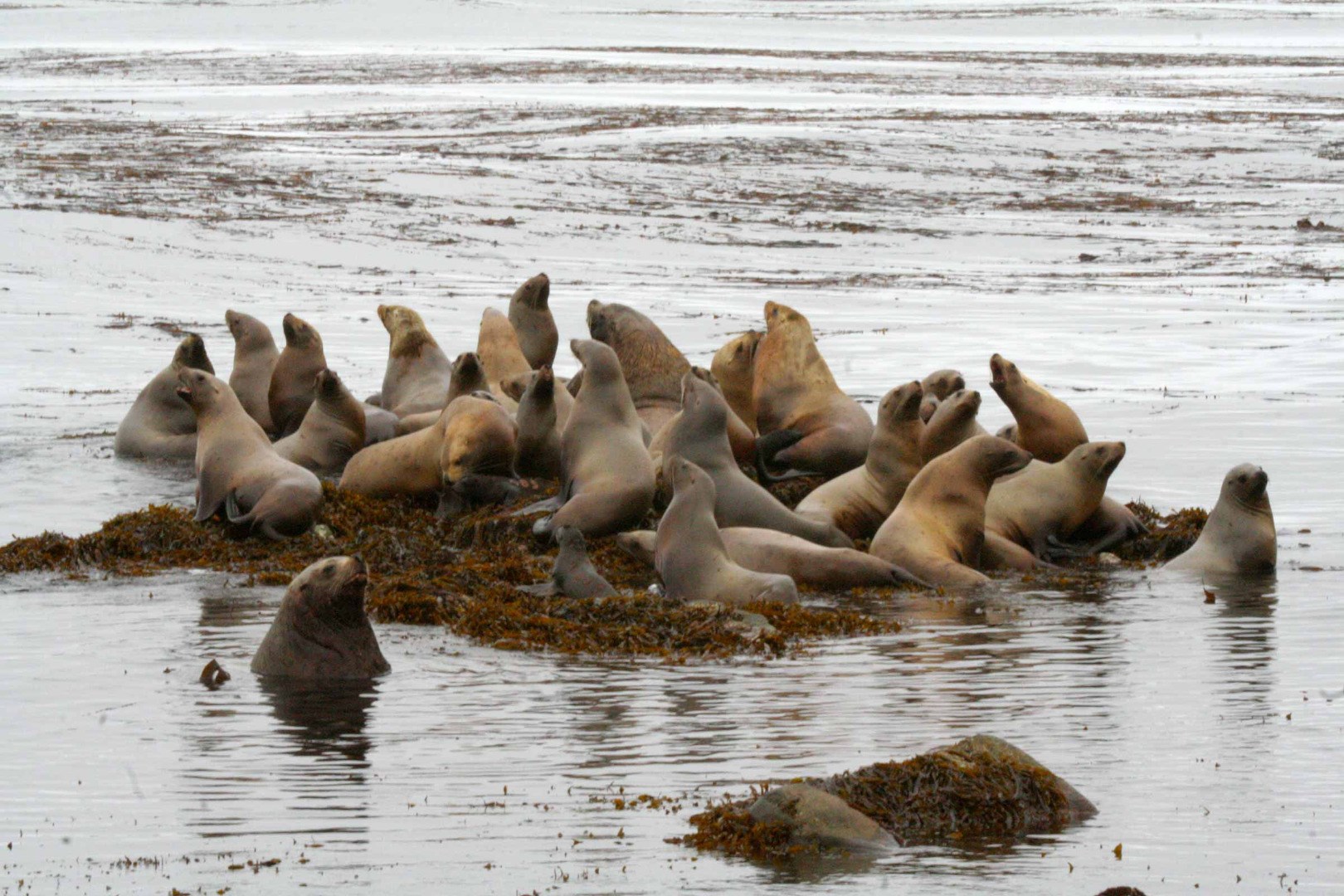May 26, 2021
by Lorrie Rea

Steller Sea Lions (NMML MMPA permit # 14326-02). Photo by Lorrie Rea.
I began studying Steller sea lions as a graduate student at the University of Alaska Fairbanks (UAF) over 30 years ago -this number still takes me by surprise sometimes.
Steller sea lion populations had decreased rapidly in the Aleutian Islands, Alaska during the previous 2 decades. Federal (NOAA) scientists were working with several university collaborators such as my Ph.D. supervisor, Dr. Michael Castellini, to try to figure out why. My job as a brand-new Ph.D. student was to collect blood samples from Steller sea lion pups, and measure specific blood metabolite concentrations to answer the question:
Were Steller sea lion pups starving? Were adult female Steller sea lions not finding enough food to adequately support their suckling pups in the first months after birth?
Well, the data suggested the vast majority pups were not starving - but that began a career of testing new hypotheses, and a strategic process of elimination. I spent the next couple of decades seeking answers. I accompanied NOAA biologists from the Marine Mammal Laboratory out to the Aleutian Islands. I visited Steller sea lion rookeries (where pups are born) in the summer on research vessels (seasick every time) and visited haulouts where animals rest in the winter by helicopter. And I co- directed Steller sea lion research trips to this region when I was a physiologist with Alaska Department of Fish and Game. We measured body condition, and collected blood, hair, and whisker samples to determine what sea lions were eating and whether they were getting enough of it.
Around a decade ago we knew that the number of pups born each year on western Aleutian Island rookeries was still declining. We knew that there was measurable mercury in several species of fish. And we knew that adult female sea lions eat A LOT of fish. Dietary (seafood) mercury can have harmful effects if at a high enough concentration, ranging from changes in brain chemistry or poor development of the nervous system, to changes in the reproductive success of adult females. Could this be one factor contributing to why the populations were not thriving?
Our initial results were clear: pups from some rookeries had mercury concentrations at levels known to cause harm in other wildlife, possibly other seals and sea lions. These mercury concentrations were measured in the natal hair that Steller sea lion pups are born with, called lanugo. This lanugo is grown in utero which means pups were exposed to mercury during a very vulnerable time of fetal neurological development.
Since returning to UAF as a researcher professor in 2013 much of my collaborative research has focused on collecting hair samples from sea lion pups in the western, central and eastern Aleutian Islands for mercury analysis. We have determined that there is a consistent pattern of higher average total mercury concentrations seen in pups sampled on islands that lie west of Amchitka Pass compared to pups on islands to the east. There were also a higher proportion of the pups sampled each year on islands to the west of the Pass that had mercury concentrations above the level known to have high risk of toxicological effect (20 μg/g dry weight in hair). So not only were the overall concentrations higher to the west, but the levels we were seeing in 20% or more of the pups sampled could cause harm.
With repeated visits to rookeries on one island in this western region (Agattu Island) we have shown that the average total mercury concentration in hair of these pups increased significantly between 2011 and 2019. These increasing concentrations also have placed more pups each year in the category at high risk of adverse effects. Only about 20% of pups were at high risk in 2011, but that proportion has increased to over 46% of pups at high risk in 2019.
We still do not know the major sources of this mercury in the Aleutian Islands, and we also do not have a clear understanding of what is contributing to this increase each year in how many Steller sea lion pups are at risk. We have many projects underway, and several more proposed awaiting funding decisions to improve our understanding about sources and drivers of mercury into top predators in the Aleutian Islands. The Aleutian Mercury Dynamics project looks back in time, measuring the mercury concentrations in the bones of Steller sea lion, northern fur seal and Pacific cod excavated from archeological middens to seek clues as to whether these same patterns of increase in mercury have occurred at other times over the past 3000 years (a little before I started my PhD!). If so, were these times of increase related to warming oceans, or increased volcanic activity? Or both? This might help us discover why we are seeing Mercury Rising in the Aleutian Islands during the past decade.